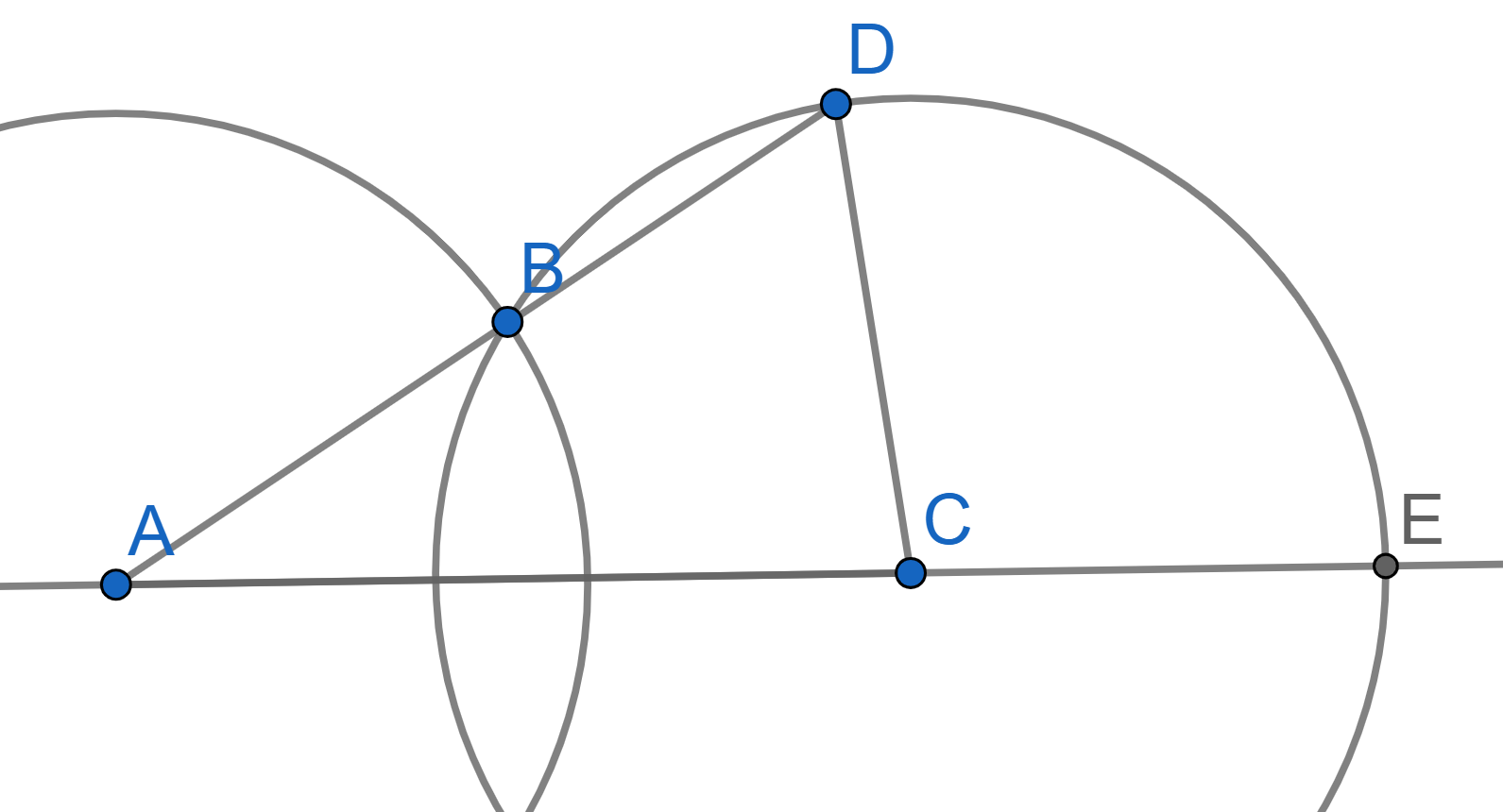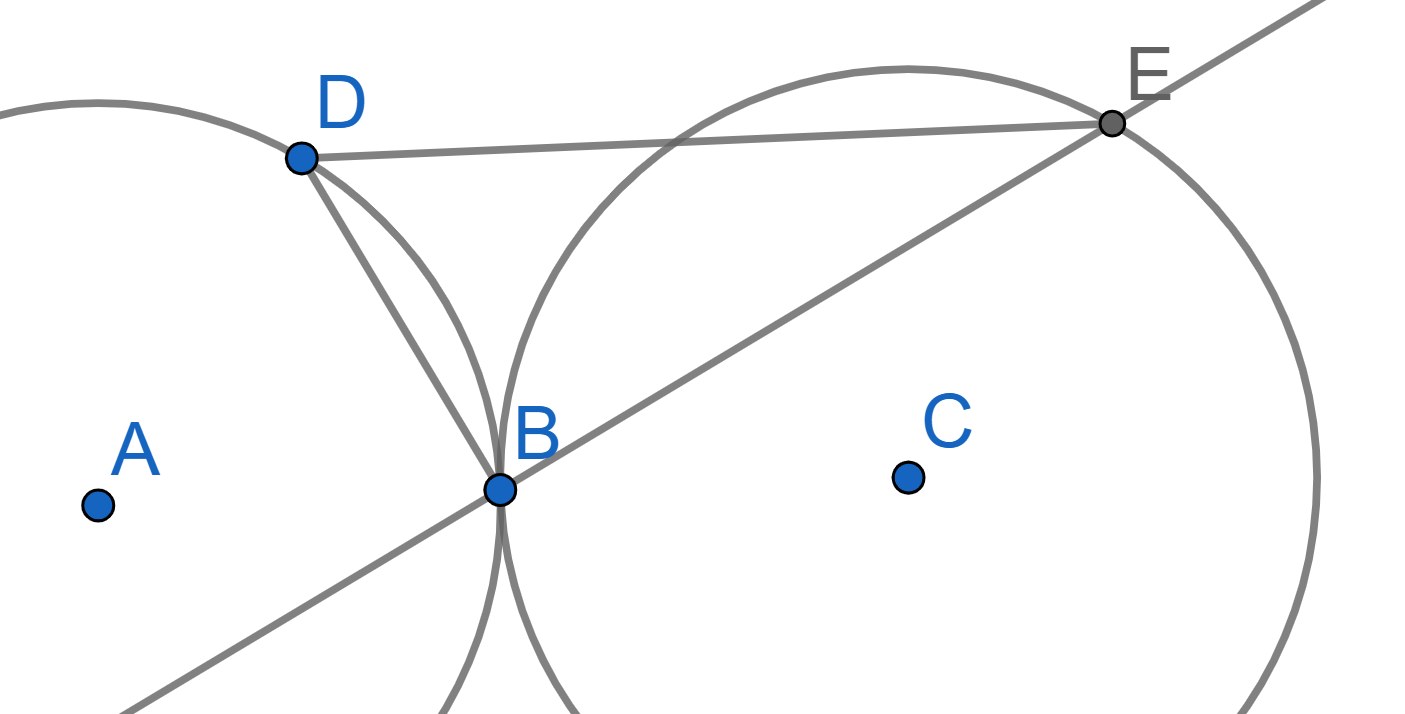Problems
Let \(O\) be the center of the rectangle \(ABCD\). Find the geometric points of \(M\) for which \(AM \geq OM, BM \geq OM\), \(CM \geq OM\), and \(DM \geq OM\).
Three segments whose lengths are equal to \(a, b\) and \(c\) are given. Using only straightedge and compass construct a segment of length: a) \(ab/c\); b) \(\sqrt {ab}\).
Two intersecting circles of radius \(R\) are given, and the distance between their centers is greater than \(R\). Prove that \(\angle ECD = 3\angle CAD\).

Two circles of radius \(R\) touch at point \(B\). On one of them, point \(D\) is chosen and on the other point \(E\) is chosen. These points have a property of \(\angle DBE = 90^{\circ}\). Prove that \(DE = 2R\).

Two circles of radius \(R\) intersect at points \(B\) and \(D\). Consider the perpendicular bisector of the segment \(BD\). This line meets the two circles again at points \(F\) and \(G\), both chosen on the same side of \(BD\). Prove that \[BD^2 + FG^2 = 4R^2.\]
A parallelogram \(ABCD\) and a point \(E\) are given. Through the points \(A, B, C, D\), lines parallel to the straight lines \(EC, ED, EA,EB\), respectively, are drawn. Prove that they intersect at one point.
Prove that if a shape has two perpendicular axes of symmetry, then it has a centre of symmetry.
Prove that a convex \(n\)-gon is regular if and only if it is transformed into itself when it is rotated through an angle of \(360^{\circ}/n\) with respect to some point.
Prove that the midpoints of the sides of a regular polygon form a regular polygon.
Two perpendicular straight lines are drawn through the centre of the square. Prove that their intersection points with the sides of a square form a square.